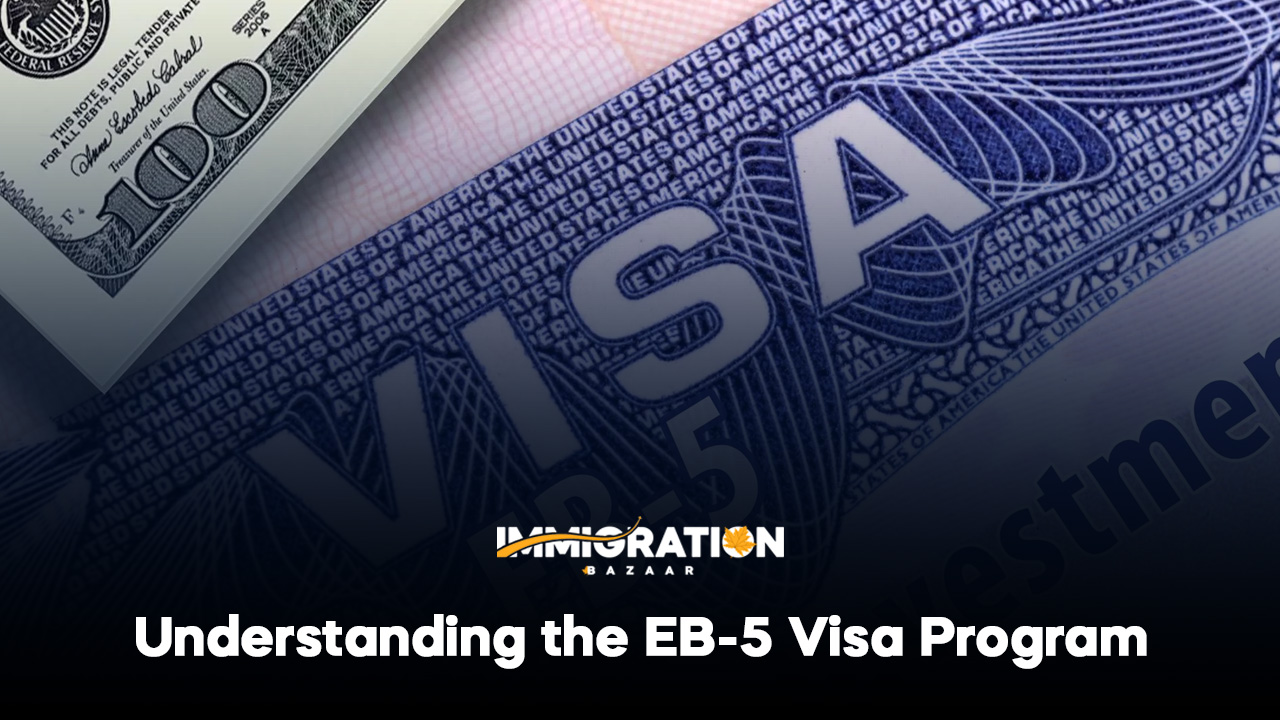The decrease in green cards for Indians, particularly through the EB-5 visa program, reflects a broader set of challenges faced by Indian nationals seeking permanent residency in the United States. This trend not only sheds light on immigration dynamics in America but also highlights significant policy shifts and competitive pressures in the global migration landscape. Let’s explore the reasons behind the reduction in green cards for Indians, the specifics of the EB-5 investor visa program, and how global economic and political developments have influenced immigration.
-
Understanding the EB-5 Visa Program
The EB-5 visa is one of the most sought-after immigration programs in the U.S. for wealthy investors. Officially known as the “Immigrant Investor Program,” it was created in 1990 to stimulate the U.S. economy through job creation and capital investment by foreign nationals. The main requirement for an EB-5 visa is that the applicant must invest a minimum amount of capital (currently set at $800,000 to $1,050,000, depending on the location of the investment) into a new commercial enterprise that creates or preserves at least ten full-time jobs for U.S. workers.
In exchange for this substantial financial commitment, investors and their immediate family members (spouse and children under 21) can apply for U.S. permanent residency, commonly known as a green card. The program has become particularly popular among Chinese and Indian investors, who see the EB-5 as a fast track to permanent residency, bypassing the notoriously long wait times and backlogs associated with employment-based and family-sponsored green card categories.
Why is the EB-5 Program Popular Among Indians?
In recent years, the number of Indian investors applying for EB-5 visas has surged, making India the second-largest source of EB-5 visa applicants, after China. Several factors contribute to the popularity of the EB-5 visa among Indians:
- Backlog in Other Visa Categories: Due to the overwhelming demand and country-specific caps on green cards, Indians face some of the longest waiting times for employment-based visas (such as the EB-2 and EB-3 categories). It is not uncommon for Indian professionals to wait decades to obtain permanent residency under these categories, leading many to explore alternative routes like the EB-5 program.
- Access to Better Opportunities: Many Indian investors view the EB-5 visa as a pathway to securing a stable future for their children, who can benefit from living, studying, and working in the U.S. without the restrictions imposed by temporary visas like the H-1B.
- Economic Success in India: With the growth of India’s economy and an increase in high-net-worth individuals, more Indians have the financial means to meet the investment thresholds required for the EB-5 program.
However, the recent reduction in the number of EB-5 visas allocated to Indians has caused concern and confusion within the Indian investor community.
-
The 22% Cut in EB-5 Visas for Indians
A recent report, not yet released to the general public but available through a survey, indicates that the U.S. has implemented a 22% cut in the number of EB-5 visas allocated to Indians between October 10, 2023, and May 31, 2024. This reduction has raised questions about whether the U.S. is shifting its immigration priorities or introducing new constraints on Indian investors.
Several factors may explain this decision:
A. Per-Country Visa Limits and Retrogression
One of the most significant limitations on green card issuance through the EB-5 program is the per-country cap. Under U.S. immigration law, no more than 7% of the total visas in any given category can be issued to citizens of a single country each year. This rule applies to EB-5 visas as well, meaning that Indian nationals, despite their growing numbers, are limited in the number of EB-5 visas they can receive annually.
When demand for visas from a particular country exceeds the cap, the applicants from that country are placed in a queue. This process, known as “retrogression,” has been particularly severe for countries like China and, more recently, India. As more Indians apply for EB-5 visas, they are running into the same retrogression issues that Chinese applicants have faced for years.
The 22% cut in EB-5 visa allocations could be a reflection of the growing backlog, with U.S. immigration authorities trying to manage demand by slowing down the issuance of new visas until the existing backlog can be addressed.
B. Shift in U.S. Immigration Priorities
In recent years, there has been a shift in U.S. immigration policy, with a stronger focus on securing borders and managing legal immigration in a way that prioritizes U.S. citizens and workers. Under the previous Trump administration, immigration policies became stricter, and while the Biden administration has adopted a more moderate stance, some of these policies remain in place.
The U.S. may be reallocating EB-5 visas to other regions or categories as part of a broader effort to balance its immigration system. For example, the U.S. government may want to spread the benefits of the EB-5 program more evenly across countries and reduce the heavy concentration of applicants from China and India.
C. Competition with China
China has historically been the largest source of EB-5 investors, and while Chinese demand has slowed somewhat due to retrogression and other factors, the U.S. may still be prioritizing Chinese applicants in certain instances. According to the report, the 22% cut in EB-5 visas for Indians is compared to those allocated to Chinese citizens, suggesting that the U.S. may be adjusting the distribution of these visas between the two countries to maintain balance or respond to specific economic or political considerations.
D. Processing Delays and Administrative Bottlenecks
The U.S. immigration system has long struggled with processing delays, exacerbated by the COVID-19 pandemic and administrative inefficiencies. These delays have affected virtually every visa category, including the EB-5 program. The recent reduction in EB-5 visas for Indians could be partly due to slower processing times, as immigration offices work through backlogs and deal with limited resources.
-
Broader Implications for Indian Investors and U.S.-India Relations
The decrease in EB-5 visas for Indians is not occurring in isolation. It reflects broader trends in both U.S. immigration policy and the global movement of high-net-worth individuals. Several important implications arise from this trend:
A. Impact on Indian Investors
For Indian investors, the 22% cut in EB-5 visas presents a significant challenge. Many of these investors have already committed substantial financial resources to U.S. investment projects, and the reduced number of visas means they may face longer wait times and uncertainty about their ability to secure a green card.
This situation could lead some Indian investors to seek alternative pathways to permanent residency in other countries. Nations like Canada, Australia, and the United Kingdom offer similar investor visa programs, and the growing hurdles in the U.S. could push Indian investors to explore these options. Canada, in particular, has been an increasingly popular destination for wealthy Indian immigrants due to its relatively fast processing times and favorable immigration policies.
B. Impact on the U.S. Economy
The EB-5 visa program has been a vital source of foreign capital for the U.S. economy, funding infrastructure projects, real estate developments, and other commercial ventures. A reduction in the number of Indian EB-5 investors could have ripple effects on sectors that rely heavily on foreign investment, particularly in regions that have benefited from Indian capital in recent years.
However, the U.S. may also be rebalancing its reliance on foreign investment by diversifying the sources of EB-5 capital. While India and China have been dominant players in the program, the U.S. may be looking to attract investors from other countries, such as Vietnam, Brazil, or South Korea, in an effort to create a more globally diverse pool of EB-5 participants.
C. U.S.-India Relations
The reduction in EB-5 visas could also be seen in the context of the broader U.S.-India relationship. While the two countries have strong ties, particularly in areas like technology, defense, and trade, immigration has been a source of tension. The Indian government has repeatedly expressed concern over the long wait times and backlogs faced by its citizens in the U.S. immigration system, particularly for employment-based green cards.
A reduction in EB-5 visas may exacerbate these tensions, as wealthy Indian investors may feel that their significant financial contributions are not being adequately recognized or rewarded. This could put pressure on the U.S. to either increase the number of EB-5 visas available to Indians or find other ways to address the concerns of the Indian diaspora.
-
Potential Future Developments in U.S. Immigration Policy
The reduction in EB-5 visas for Indians may signal broader changes in U.S. immigration policy. The following trends could shape the future of U.S. immigration and its impact on Indian nationals:
A. Reform of the EB-5 Program
There have been calls for reforming the EB-5 program to address issues like retrogression, processing delays, and fraud. One potential solution is to eliminate or raise the per-country cap, which would allow more visas to be issued to nationals from high-demand countries like India. However, such reforms would require congressional approval, and it is unclear whether there is sufficient political will to enact these changes.
B. Focus on Merit-Based Immigration
The U.S. may continue to shift its immigration system toward a more merit-based model, prioritizing immigrants with high levels of education, skills, and investment. This could benefit Indian professionals in fields like technology and engineering, but it may also lead to stricter requirements for investor visas like the EB-5.







